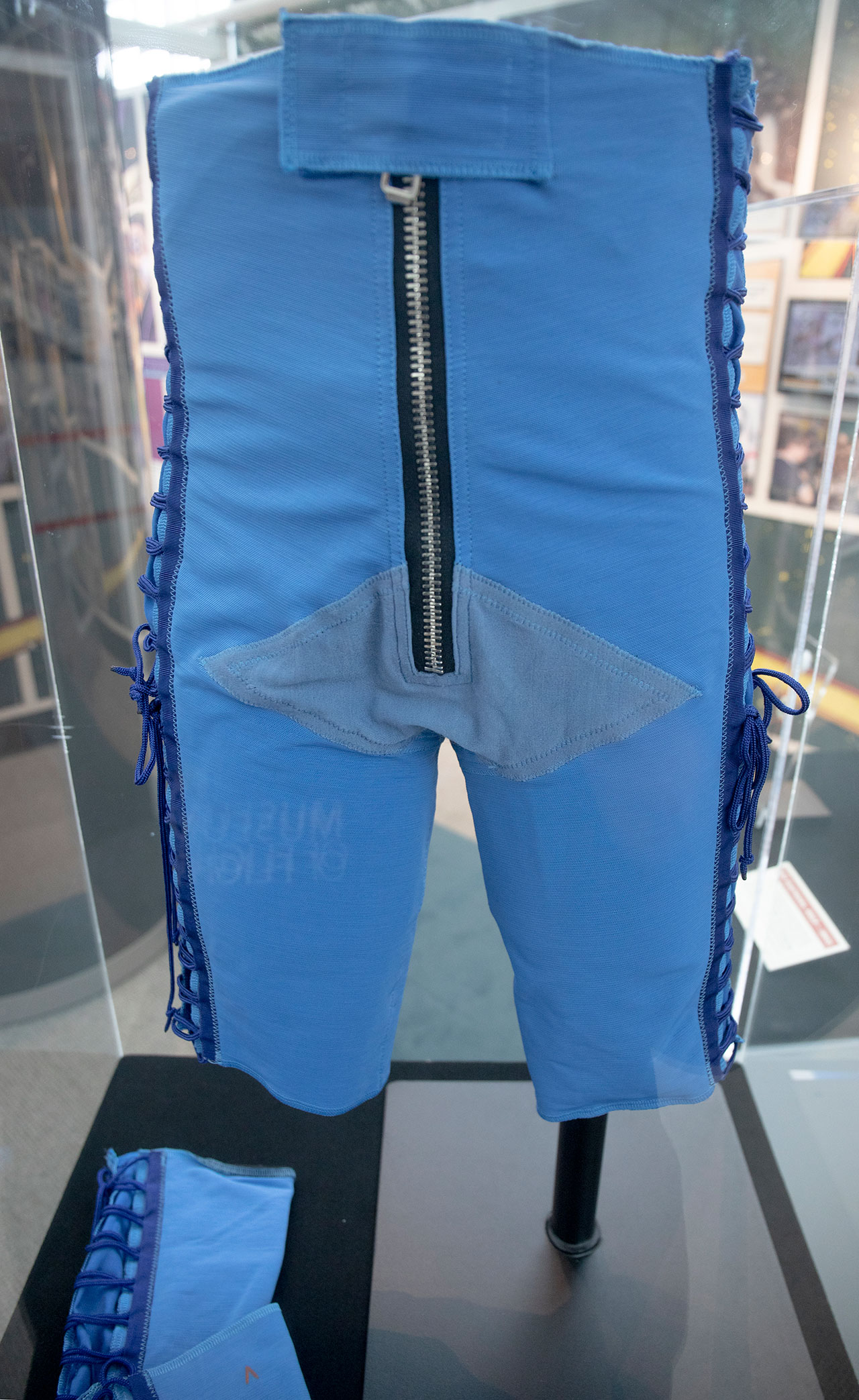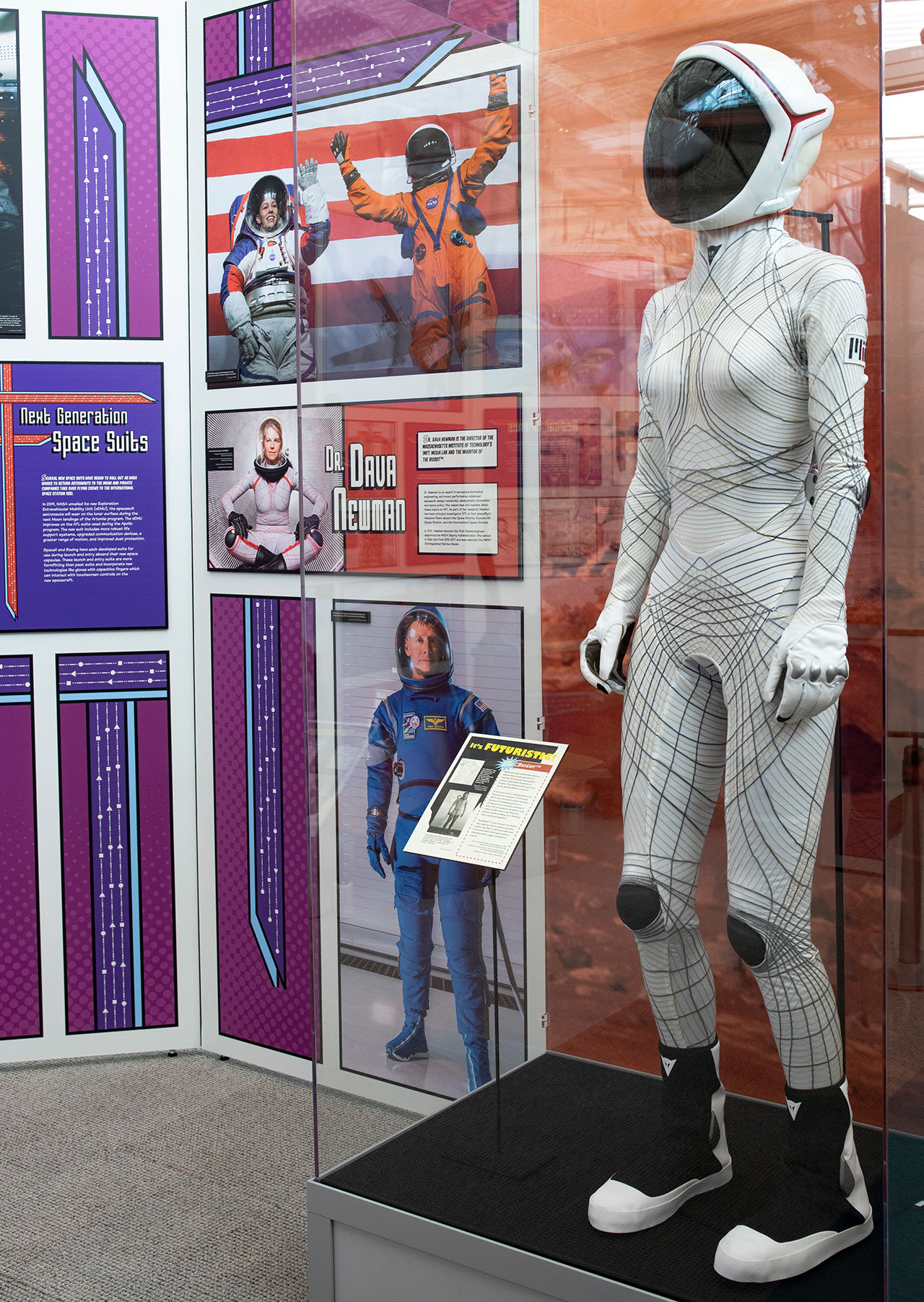New exhibit tells 'stranger than fiction' tale of aerospace medicine

The idea of an antigravity suit may seem like the stuff of sci-fi, but one such garment that was worn by a NASA astronaut is among the space artifacts now highlighting how aerospace medicine can be "stranger than fiction."
Opening on Saturday (July 3) at The Museum of Flight in Seattle, "Stranger Than Fiction: The Incredible Science of Aerospace Medicine" brings together dozens of aviation and space artifacts to tell the story of how doctors and researchers have devised the means to keep humans alive and in good health while in the extreme environments of air and space flight.
"They have got my Kentavr, which is a Russian device to prevent fainting after landing," NASA astronaut Michael Barratt said in an interview with collectSPACE.com, describing his "antigravity suit" — a pair of blue compression shorts that he wore to return from the International Space Station in 2009. "It squeezes the legs and thighs."
Related: The Human Body in Space: 6 Weird Facts
A member of the team who helped create the exhibition for The Museum of Flight, Barratt's familiarity with space medicine precedes his own two missions into orbit. A former NASA flight surgeon and medical operations lead for the space station, Barratt lectures extensively about space and extreme medicine and serves as the senior editor for a textbook on the subject.
Even so, Barratt recognizes how the topic can be seen as "stranger than fiction."
"Well, for me, it's reality, and it's strange. I would call it a very strange reality," he said.
Get the Space.com Newsletter
Breaking space news, the latest updates on rocket launches, skywatching events and more!
"I teach space medicine to a lot of various audiences, mostly medical. So when I do this, I'm talking about adaptive physiology, G- [gravity-] loads and microgravity to various medical audiences and they have to be six layers deep in detail. And even to them, it is very novel. What we see is way outside their experience base," Barratt said. "Now [with this exhibit] we are trying to communicate these concepts with the general public. So to them, it will be sort of science fiction."

Recognizing what the challenge might be from the start, the museum adopted a motif for the exhibit that matches the expectations for subject matter — vintage comic book art.
"Early on, there was a lot of concern about the exhibit being too technical, too dry and that it would be challenging to make it appealing to the general public," Geoff Nunn, the museum's adjunct curator for space history, told collectSPACE. "One of the goals of the exhibit is to present flight surgeons as heroes and we realized that the stories of them exploring the unknown, acting as their own test subjects and coming up with these incredible devices and technological contraptions to make flying safe really read like a classic comic or an action serial."
"So we put this visual style with these stories because it brought these incredible feats forward and helped make them more accessible to a general audience," he said.

"Stranger Than Fiction" spans the history of aviation to modern day spaceflight. In addition to Barratt's Kentavr, the exhibition's space artifacts include the medical kit flown on the final flight of space shuttle Endeavour; a Russian "Penguin Suit" sized for NASA astronaut Wendy Lawrence to keep her fit in orbit; and the BioSuit, a skintight spacesuit designed by NASA's former deputy administrator and MIT professor of astronautics, Dava Newman.
"They also have my Russian biomedical harness that I wore during a Russian spacesuit EVA [extravehicular activity, or spacewalk] and a couple of heritage radiation detectors that we had in our inventory here at NASA from the Apollo era," Barratt said.
The exhibition, which runs through Feb. 6, 2022, is opening at a time when the number of people who have the opportunity to experience spaceflight is expected to expand dramatically with the rise of commercial spaceflight and the space tourism market. The advancements in aerospace medicine from the past will help keep those passengers safe, while the growth in the number and types of people who fly is anticipated to reveal new challenges, both Nunn and Barratt said.
"As we start looking to fly more spaceflight participants through private companies the community is having to adjust how they look at space flyer safety," said Nunn.
"Not only is the commercial community growing, but the space medical community that is needed really to support and understand this effort is growing as well, and it is one of the most satisfying things to see," Barratt said.
Follow collectSPACE.com on Facebook and on Twitter at @collectSPACE. Copyright 2021 collectSPACE.com. All rights reserved.
Join our Space Forums to keep talking space on the latest missions, night sky and more! And if you have a news tip, correction or comment, let us know at: community@space.com.

Robert Pearlman is a space historian, journalist and the founder and editor of collectSPACE.com, a daily news publication and community devoted to space history with a particular focus on how and where space exploration intersects with pop culture. Pearlman is also a contributing writer for Space.com and co-author of "Space Stations: The Art, Science, and Reality of Working in Space” published by Smithsonian Books in 2018.In 2009, he was inducted into the U.S. Space Camp Hall of Fame in Huntsville, Alabama. In 2021, he was honored by the American Astronautical Society with the Ordway Award for Sustained Excellence in Spaceflight History. In 2023, the National Space Club Florida Committee recognized Pearlman with the Kolcum News and Communications Award for excellence in telling the space story along the Space Coast and throughout the world.

